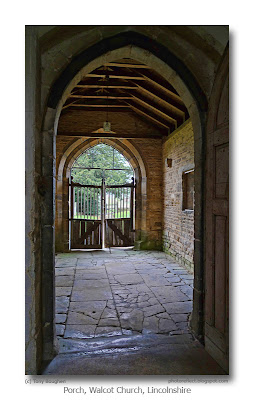 click photo to enlarge
click photo to enlargeI recently got rid of an old winter shirt. It wasn't just any shirt, it was my favourite shirt, a checked garment that I'd worn with pleasure for more years than I can remember. I was so fond of it that I found it a real wrench to give it up. But, the cuffs were falling apart and were beyond repair. Four or five years ago I'd come close to dispensing with it. On that occasion the collar had become threadbare to the point where it was quite noticeable. However, my talented wife, after a bout of heavy persuasion from me, took the collar off and sewed it on the other way round, with the offending section hidden under the fold. After I got it back an air of contentment settled on me once more. From this you might think that I'm a skinflint - I'm not (well not that much!), or that I don't like to buy new clothes - I do (but not that much!) No, they weren't the issue. There was something much more fundamental to the human psyche at work here, something to do with our liking for that which is familiar, and that which has given us good service. It's often the case that we don't like to change or get rid of such things.
Take the porch in today's photograph. It is on the south side of Walcot church in Lincolnshire, a building that has featured in this blog in two other photographs here and here. The structure dates from the fourteenth century, though some twelfth century stonework has been incorporated. The door that is just visible is early eighteenth century, and the outer gate is older than such things usually are. However, whilst most of these details can be dated by their stylistic peculiarities, the cracked stone floor can't. It was the way the light fell on this old surface that prompted my photograph. Like most old churches this one has been restored down the centuries. Walcot church's foundations were renewed in 1889, and general restoration took place in 1907 and 1926. Does the stone floor of the porch date from any of these make-overs? I'd guess not. In 1889 they'd certainly have laid a floor that would not have sunk and cracked, and probably would have used some decorative tiles. It can't be later than that date. So, why wasn't it restored? Why is this old surface still in use? My guess is that the parishioners liked its character, enjoyed the step that is worn down by the footfall of successive generations of worshippers, and wanted to retain that with which they were familiar. Maybe they didn't want to spend their money on shiny, fashionable tiles of unproven worth. A new floor (like a new shirt) just isn't the same as a tried and trusted old favourite!
Incidentally this photograph was taken with the LX3 set to the aspect ratio of 16:9, and has a small amount cropped off the bottom. I've taken a few subjects in portrait format using this ratio where it seems the most suitable option.
photograph & text (c) T. Boughen
Camera: Lumix LX3
Mode: Aperture Priority
Focal Length: 5.1mm (24mm/35mm equiv.)
F No: f2.8
Shutter Speed: 1/250
ISO: 80
Exposure Compensation: -1.0 EV
Image Stabilisation: On